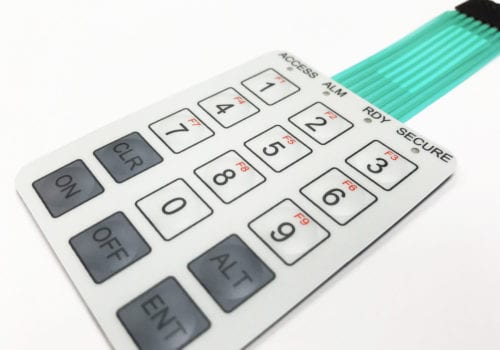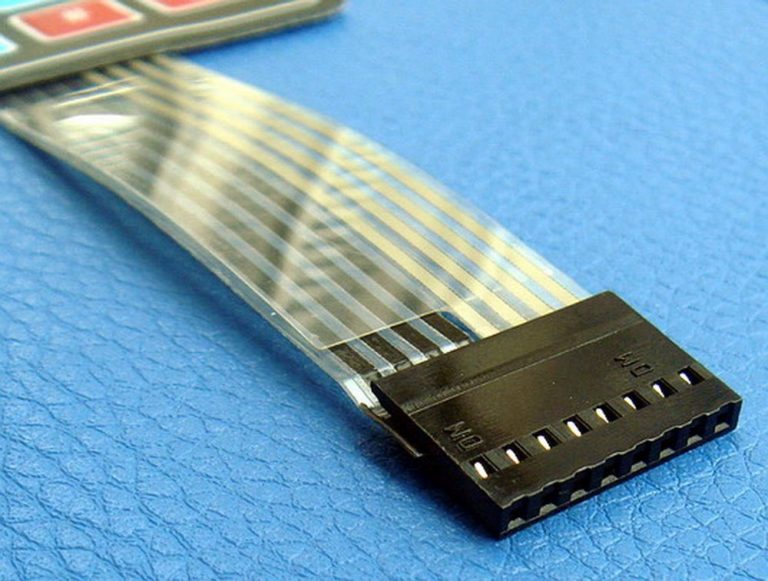Working with a qualified membrane switch manufacturer ensures adherence with technical standards.
Working with a qualified membrane switch manufacturer ensures adherence with technical standards.
Blog Article
Everything About Membrane Layer Change: Comprehending Its Style and Capability
When you think of the control interfaces in contemporary devices, membrane layer buttons typically come to mind. These components are a lot more than simply buttons; they blend design and capability seamlessly. Understanding exactly how they function and what makes them efficient can change your perspective on everyday electronic devices. There are subtleties to their layout and efficiency that you could not be aware of. Allow's discover what collections membrane layer switches over in addition to various other control systems.
What Are Membrane Buttons?

Membrane switches can additionally be customized regarding shape, size, and graphics, enabling suppliers to produce unique user interfaces tailored to certain products. Generally, membrane layer switches play a considerable role in improving customer experience throughout a broad selection of applications.
Exactly How Membrane Layer Switches Work
When you push a key on a membrane button, it activates a straightforward yet effective system. The leading layer, usually made from adaptable material, lowers onto a conductive layer underneath it. This action bridges the space between conductive traces, completing an electric circuit. As quickly as the circuit closes, it sends out a signal to the gadget's controller, which interprets your input.
You'll see that the responsive comments differs based on the switch style, providing either a soft click or a much more pronounced response. When you launch the trick, the membrane layer returns to its original position, reopening the circuit and quiting the signal. This procedure takes place almost instantly, guaranteeing a receptive customer experience.
Membrane buttons are popular due to their toughness and resistance to dirt and dampness, making them optimal for various applications, from household devices to medical gadgets. Understanding this procedure aids you value their widespread use.
Trick Elements of Membrane Layer Switches
Understanding the vital components of membrane switches is essential for realizing their functionality and style. At the core, you'll find the visuals overlay, which supplies the visual user interface for individuals. Beneath that, there's a spacer layer that separates the circuit layers, ensuring that they don't make get in touch with until pushed. The circuit layer is where the magic takes place; it is composed of conductive traces that finish the circuit when you press the switch. An additional important component is the glue backing, allowing the switch to follow surface areas securely. Finally, the protective layer guards versus environmental factors and use, prolonging the button's life expectancy. Each part plays a significant role in guaranteeing dependable efficiency and user communication. By recognizing these parts, you'll gain insight right into exactly how membrane layer changes run and their value in different applications.
Products Used in Membrane Switch Layout
The performance and durability of membrane switches over greatly depend on the products utilized in their style. You commonly come across polyester and polycarbonate as primary substratums as a result of their exceptional strength and adaptability. These products stand up to scratches and chemicals, making them suitable for demanding atmospheres.
The conductive layers often use silver or carbon, selected for their dependability and conductivity. membrane switch manufacturer. Silver provides premium performance, while carbon is a cost-efficient alternative. For the overlay, you might take into consideration a matte or shiny finish, relying on your visual demands and individual experience
Adhesives play an important duty also; they bond layers securely and ensure longevity. Make particular to pick adhesives that hold up against ecological aspects like temperature and moisture. Don't ignore the significance of a great printing method for graphics, as it improves both performance and visual charm. Choosing the best products will ensure your membrane button stands the examination of time.
Layout Factors To Consider for Membrane Layer Buttons
While developing membrane layer switches, it's essential to take into account numerous elements that influence their functionality and individual experience. Begin by concentrating on the layout and button dimension; make specific they're instinctive and simple to navigate. Think about the tactile comments you wish to provide-- will individuals require an obvious click or a softer touch? In addition, consider the products you'll make use of, as they'll affect durability and looks.
Validate your design fits ecological elements, like wetness or temperature variants, which can impact efficiency. By meticulously considering these aspects, you'll create a membrane button that improves functionality and fulfillment.
Applications of Membrane Layer Switches
Membrane switches are versatile elements located in numerous applications, from industrial equipment to customer electronics. You'll see their effect in makers that call for durable interfaces and in tools that take advantage of streamlined styles. Recognizing these applications helps you value the capability and functionality of membrane layer switches in daily modern technology.
Industrial Devices Usage
When you're aiming to boost the performance of industrial equipment, membrane layer switches offer a reputable remedy that integrates resilience with easy to use design. These buttons are perfect for extreme environments, offering resistance to dirt, dampness, and chemicals. You'll locate them in control panels for manufacturing makers, heating and cooling systems, and clinical gadgets, where accuracy and responsiveness are vital. Their reduced profile indicates they fit effortlessly into numerous equipment, saving valuable area additional resources while preserving simplicity of use. With customizable graphics and backlighting choices, you can develop an instinctive user interface for drivers, improving effectiveness and safety and security. Plus, their long life expectancy minimizes maintenance expenses, why not try these out making them a clever financial investment for your industrial applications. Welcome membrane layer switches to enhance your operations and improve general efficiency.
Consumer Electronics Assimilation
In the domain of consumer electronic devices, membrane buttons play an essential duty in boosting individual communication and gadget capability. You'll discover them in tools like microwaves, push-button controls, and video gaming consoles, supplying a smooth means to communicate with technology. Their smooth design permits very easy combination right into different items, making controls instinctive and user-friendly. With their ability to include graphics and backlighting, you can enjoy a modern visual that matches the tool's general appearance. Membrane buttons additionally assure longevity and resistance to dirt and wetness, prolonging the life-span of your electronic devices. By choosing membrane switches, you enhance not simply the capability but likewise the style of your devices, making day-to-day communications smooth and satisfying.
Advantages and Negative Aspects of Membrane Layer Switches
While membrane buttons supply an array of benefits, they also come with some disadvantages that you must consider. One substantial advantage is their small design, making them ideal for space-constrained applications.

However, there are downsides. Membrane layer buttons can have a shorter life expectancy contrasted to mechanical buttons, particularly under heavy usage. They can additionally be less responsive, which may affect user responses during procedure. Moreover, if harmed, fixing them can be tough and usually requires complete replacement. Ultimately, their sensitivity to extreme temperatures and environmental problems may limit their efficiency in particular setups. Stabilizing these pros and disadvantages will assist you determine if membrane layer buttons are the right fit for your task.
Frequently Asked Inquiries
For How Long Do Membrane Layer Changes Normally Last?
Membrane layer switches typically last in between 5 to ten years, relying on usage and ecological conditions. You'll wish to examine factors like wear, direct exposure to dampness, and temperature level variations to assess their longevity efficiently.
Can Membrane Layer Switches Be Custom-made for Particular Styles?
Yes, you can customize membrane buttons to fit details styles (membrane switch manufacturer). You'll have the freedom to pick colors, shapes, and layouts that match your browse around here task's needs, ensuring they mix seamlessly with your overall visual
What Is the Cost Variety for Membrane Layer Switch Production?
The expense variety for membrane switch manufacturing normally falls in between $1 and $10 per unit, depending upon aspects like layout intricacy, amount, and products. You can obtain quotes from makers to find the very best option.

Are Membrane Changes Waterproof or Immune?
Membrane layer buttons can be designed to be water resistant or immune, depending upon materials used and building approaches. If you require them for damp atmospheres, ensure you define those needs throughout the style process.
Just How Do Membrane Switches Compare to Conventional Switches?
Membrane layer switches are generally thinner and more flexible than traditional buttons, offering a smooth layout. They're often simpler to clean and incorporate, but could not provide the tactile feedback you're used to with mechanical alternatives.
Conclusion

Report this page